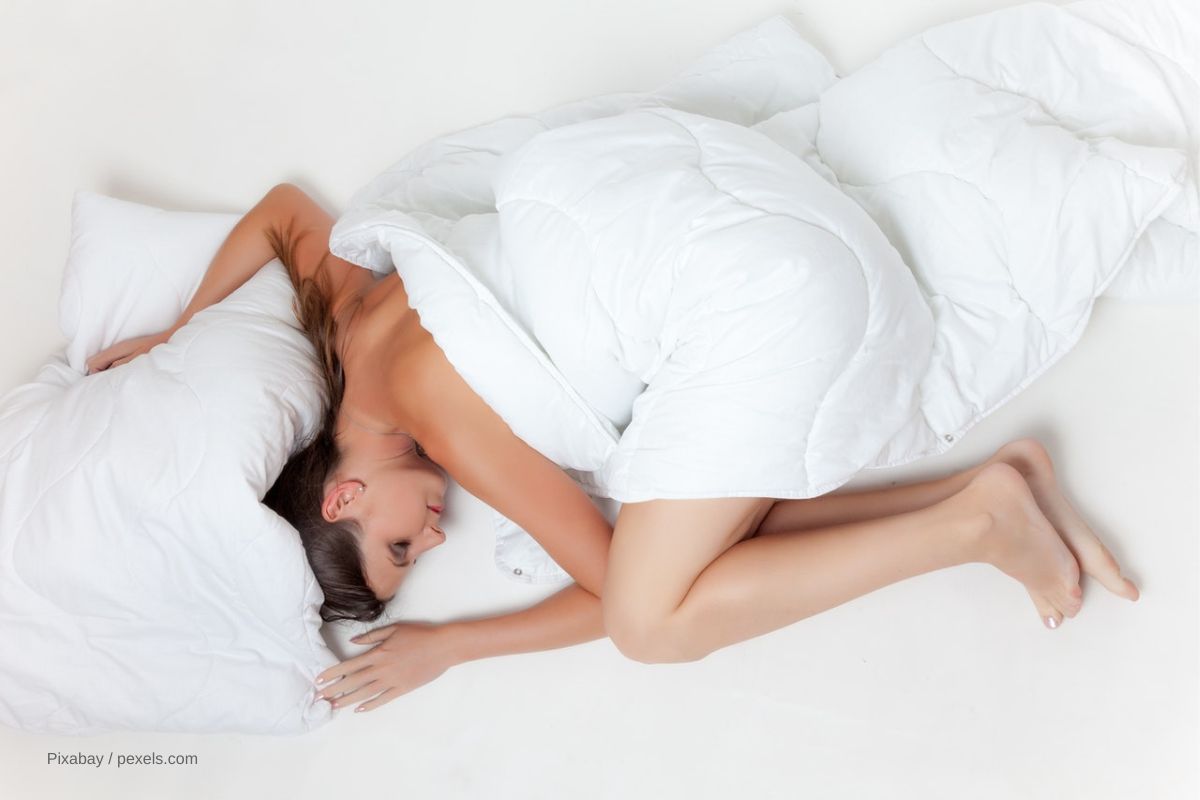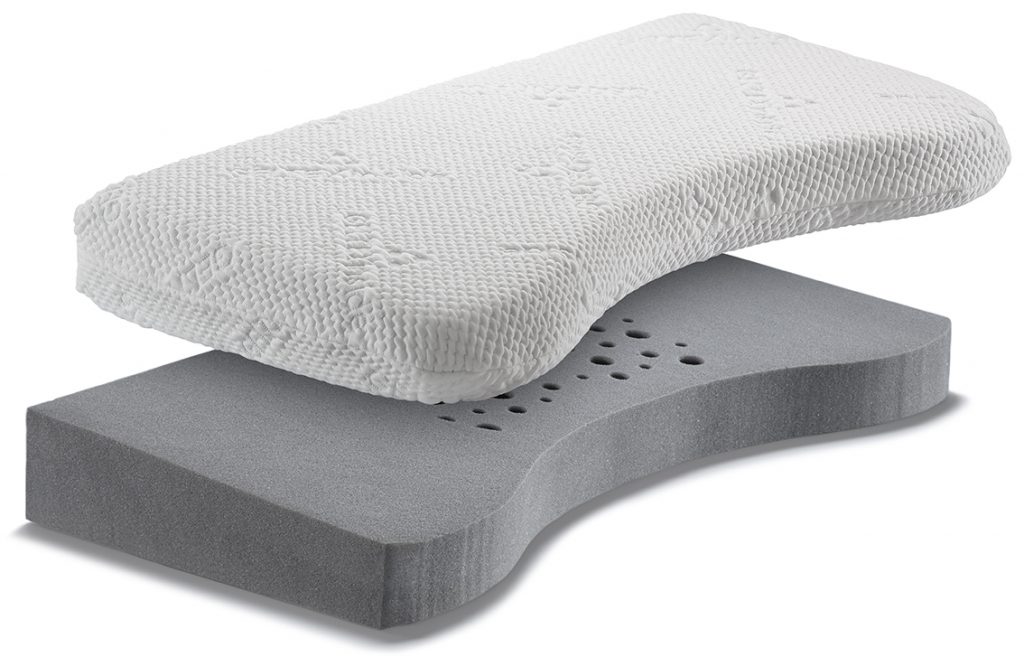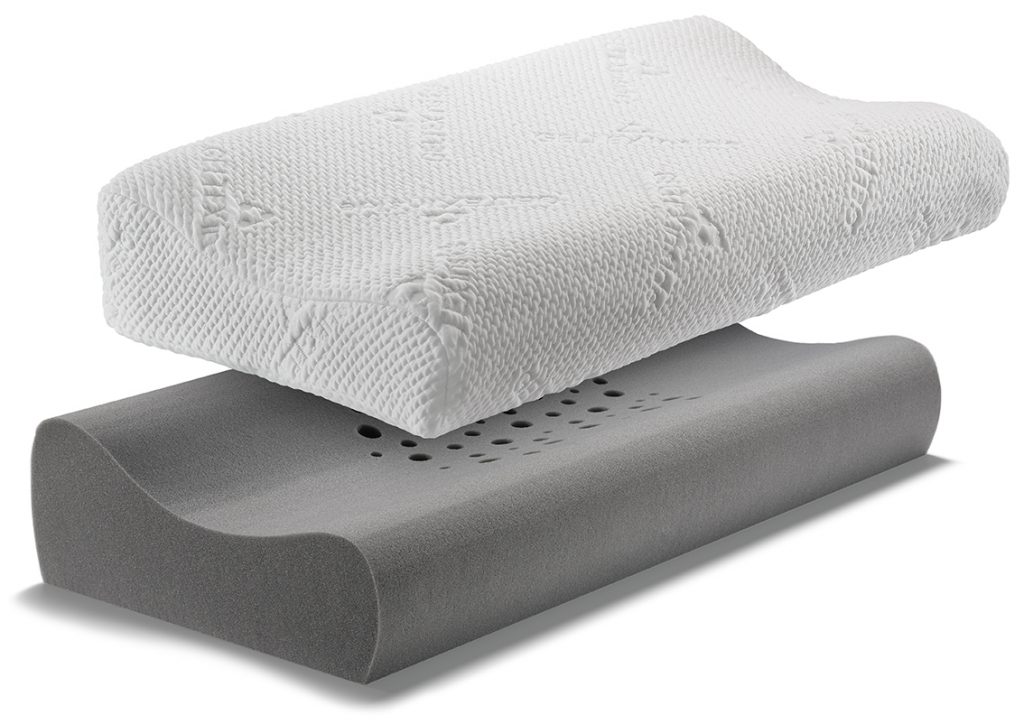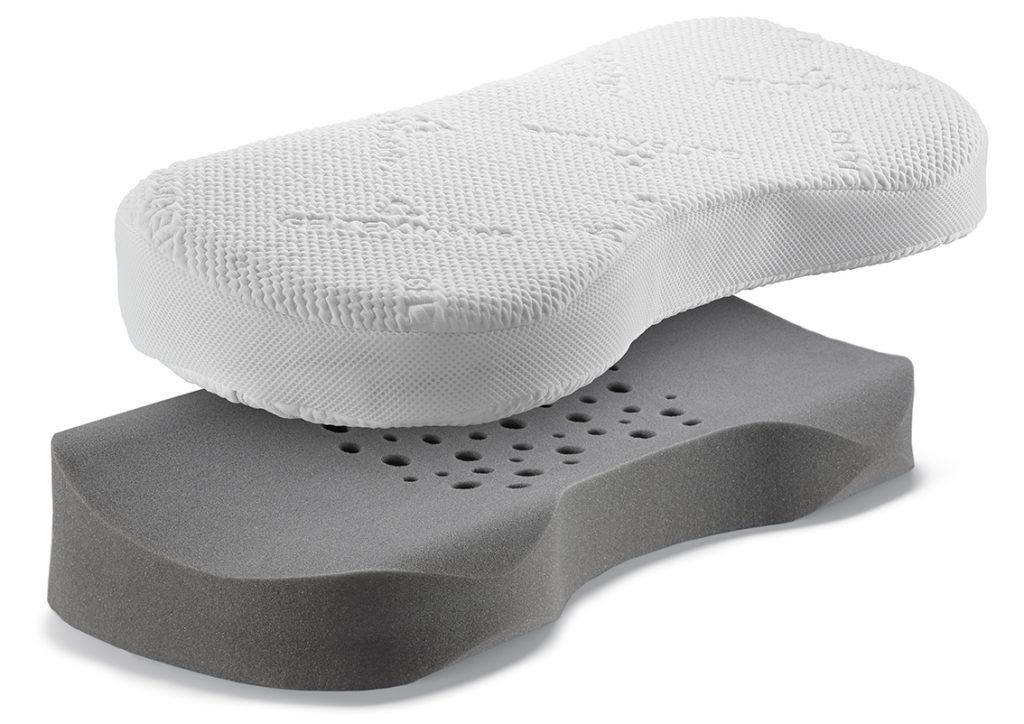Sleeping better with Swissflex – Finding a comfortable sleeping position

Your sleeping position is as individual as you are and has a major impact on a restful night's sleep. If you sleep in the wrong position, you risk long-term health problems such as neck pain and back tension. That's why it's worth taking care of maintaining a healthy and gentle position while you fall asleep, which relieves the body and ensures that you can recover well at night. On your back, on your side or on your stomach – which sleeping position is most suitable for you?
- An overview of sleeping positions – Which one is the healthiest?
- The sleeping position against pain: Sleeping on your back prevents pain
- The most popular sleeping position: Sleeping on the side ensures relaxed nights
- The controversial sleeping position: Sleeping on the stomach
- The sleeping position for security: Sleeping like a baby
An overview of sleeping positions – Which one is the healthiest?
Are you also one of those people who turn into the most varied sleeping positions at night until they can finally fall asleep? You likely have experienced this scenario a few times. We change our sleeping position up to 60 times per night – quite a lot, isn't it? The body uses the movement during sleep to relax muscles and joints so that you can recover well and be fit for the next day. Good and especially healthy sleep is a real fountain of youth for the body! But although we move around a lot at night, most people prefer a certain sleeping position to fall asleep. Essentially, four different postures can be defined:
- Prone position
- Lateral position
- Supine position
- Embryonic position
The easiest way to find out which sleeping position is best for you personally and ensures good sleep is to try it out. Each of the different positions has its advantages and disadvantages – therefore there is no right or wrong sleeping position that is equally good for all people.
The sleeping position against pain: Sleeping on your back prevents pain
This is how the sleeping position works: lie horizontally on your back with your arms resting on the side of your body on the sheet or slightly stretched out above your head.
Advantages of the the supine position:
- Relieve physical pain thanks to natural alignment of the spine
- Prevent neck pain and neck tension
- A fresh looking and lively appearance: no pillow marks and wrinkles on the face
- Recommended for skin impurities and acne
Disadvantages of the supine position:
- May promote or intensify snoring
- Not suitable for sleep apnea
Sleeping on your back is generally considered to be an extremely healthy sleeping position, as the spine can align itself naturally and assume its usual S-shape. This way, the intervertebral discs between the spine are relieved and can initiate the regeneration of the spine by releasing harmful substances and absorbing fluid. That is why, by the way, we enjoy a few extra centimeters in height every morning! If you regularly suffer from physical pain and tension, you can prevent it with the sleeping position on your back. Make sure you have a well-made high-quality mattress and a suitable pillow: Too many or high pillows can lead to a wrong position of the neck vertebrae when lying down and can cause pain in your neck.
You're worried about pillow marks and signs of aging like wrinkles? Then the supine position is exactly the right sleeping position for you! If you don't dig your face into the pillow at night, you avoid pillow marks on your cheeks and chest, which can develop into real wrinkles over time. Even in the case of skin impurities such as acne or oily skin, it makes sense to reduce contact with the pillowcase during sleep to a minimum.
The most popular sleeping position: Sleeping on the side ensures relaxed nights
This is how the sleeping position works: In your bed, lie comfortably on your side, your head rests relaxed on the pillow and your hands are under your head or on the side.
Advantages of the lateral position:
- Relieves the back and can prevent back pain
- Suitable for sleep apnea, breathing and circulation problems
- Recommended for snorers
Disadvantages of the lateral position:
- May cause increased skin impurities and wrinkles due to cushion contact
- The pressure of the body leads to numb limbs
- Not suitable for shoulder complaints
The side position is by far the most popular sleeping position and is considered to be harmless to your health: You can therefore enjoy your pillow or cuddle nicely with your partner. Heavy snorers in particular benefit from the side position, as it reduces symptoms and ensures relaxed nights for two. Sleeping on your side is also beneficial for back pain, as long as you don't bend too much, and can reduce the symptoms of carpal tunnel syndrome. Here, it is especially important that no pressure is exerted on the wrists while sleeping.
As a side sleeper, you wonder which side of your body you should prefer in this sleeping position? Whether you sleep on the left side or your right, ultimately it is a question of personal preference. For some health problems, however, it may be advisable to sleep on the left side. Those who have problems with heartburn benefit from the fact that the stomach is lower than the esophagus. Thus, they have less stomach acid coming up the esophagus. Pregnant women are also recommended to sleep on the left side, because this position relieves the circulation and improves the blood flow to the placenta.
The lateral position also has disadvantages: In this position, the body weight can promote numbness in limbs and cause the unpleasant prickling sensation and frighten you out of sleep. Increased pillow contact also raises the chances of getting skin impurities and wrinkles. Beauty-conscious people can easily prevent this by changing and washing the sheets and pillowcases regularly and changing the sleeping position every now and then. This also relieves the strain on shoulders, arms, back, and hips during sleep.
The controversial sleeping position: Sleeping on the stomach
This is how the sleeping position works: Stomach sleepers prefer to lie on their stomachs frontally, their arms crossed in front of their head or rolled into the pillow.
Advantages of the prone position:
- Loud snoring is reduced
- Can have a beneficial effect on sleep apnea
Disadvantages of the prone position:
- Not suitable in case of breathing and circulation problems
- Overextension of the spine easily leads to pain and tension in the back
- Leads to neck pain because of the twisted head position
Caution is required for the sleeping position on the stomach: The prone position can significantly reduce loud snoring, but in the long run it brings some health risks. The natural S-curve of the spine is flattened by sleeping on the stomach, which puts pressure on joints and muscles and can put pressure on the back. It doesn't matter whether people in this sleeping position breathe through the pillow or turn their head slightly to the side: The prone position provides little relief for the neck and also makes breathing more difficult due to the pressure on the chest. Sleep experts therefore advise to get used to a different sleeping position for the benefit of your health. 
The sleeping position for security: Sleeping like a baby
This is how the sleeping position works: The embryonic position is an extreme version of the lateral position, with a curled back, strongly bent legs and arms crossed to protect the upper body. Sometimes the arms embrace the knees.
Advantages of the embryonic position:
- Sleepers benefit from a feeling of security in the embryonic position
Disadvantages of the embryonic position:
- Strong curve of the spinal region favors back problems
- No deep breathing possible
Who wouldn't want to sleep safe and secure like a baby to get some rest and regeneration? The embryonic position for sleeping can make you feel peaceful and safe. However, this sleeping position is not that healthy, as it causes a strong curve of the back, which makes the regeneration of the intervertebral discs more difficult and can lead to back pain. Breathing can also be reduced by the embryonic position because the diaphragm becomes trapped and cannot work as efficiently. To be able to breathe freely, you should therefore not bend your legs too much and, if possible, occasionally change to the more favorable side position. A special side sleeper pillow can prevent you from bending too much in your sleep and contribute to a restful night's sleep.
Which ultimately is the right sleeping position for healthy sleep? The one that is most comfortable for you personally and does not affect your sleep quality! If your sleep is affected by an unfavorable posture, why not change your position as you fall asleep and see how you feel the next morning? If you want to know what your individual sleeping position says about you, you can take a look at the psychology of sleep.
Photo credits:
Pixabay / pexels.com


